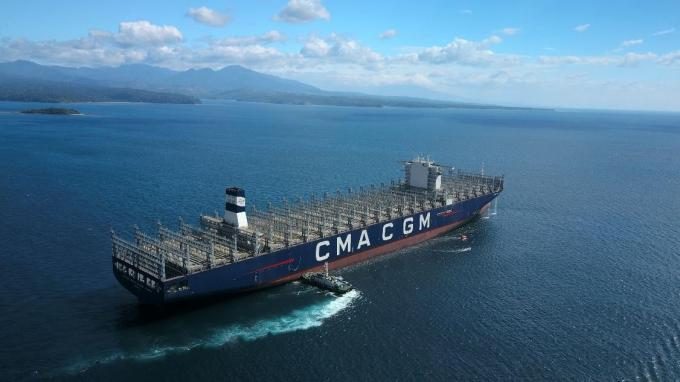Liners add capacity to Asia-ECSA as ocean rates hit 18-month high
With Asia-South America ocean freight rates at an 18-month high of around $4,350 per 40ft, ...

Some 8.8% of capacity is due to be pulled from the Asia to Europe market by ocean carriers over the next 12 weeks.
CMA CGM has announced it will blank five sailings in the period surrounding China’s Golden Week, removing close to 100,000 teu from the Asia to Europe trades.
The carrier’s French Asia Line (FAL) services 1, 2, 5, 7 and 8 have been pulled for the seven-day national holiday running from 1-7 October.
It gave no reason for the move, but one source told The Loadstar: “It could echo the fears about a general decline some clients are nervously anticipating in Q4. We are trying to connect the dots to determine the factors behind the decision.
“However, we tend to be very cautious in making these assessments and will wait to see how other stakeholders react or move.”
While the source added that the blankings “don’t necessarily foretell doom and gloom”, it appears the decision from CMA CGM has not been made in isolation.
According to documents seen by The Loadstar, the 2M Alliance of Maersk and MSC will pull 10% of its capacity on the trade between now and the Chinese holiday, blanking seven sailings, while THE Alliance pulls 18%, blanking 10.
Commentators have suggested that the failure of a peak season to materialise in the build-up to Golden Week has likely driven the lines to reduce capacity as they look for ways to maintain rates that have recently “collapsed”, particularly on Asia-Europe routes.
The Loadstar’s shipping correspondent and former broker, Mike Wackett, commented: “There has been no peak season this year and the demand outlook is very poor going into the fourth quarter. I think the carriers will adopt the same radical approach as they did at the start of the pandemic, and take out a huge amount of capacity to protect and, as it proved then, boost their rates.”
Meanwhile, others have pointed to the growing list of problems and changes in the operating environment influencing carrier decisions to blank sailings.
DHL Global Forwarding’s ocean freight head for the Americas, Goetz Alebrand, pointed to strikes, bottlenecks and equipment shortages as influencing factors, and added: “There are still a lot of unknowns, given a possible global recession, and supply chain bottlenecks are apparent around the world.
“Our DHL Ocean Freight Update also highlights that the equipment (container) situation also remains tight, especially for 40ft containers.”
Elevated freight rates are driving inflation, according to John McCown in this month’s Loadstar Podcast
Comment on this article
Adrian Schultz
September 04, 2022 at 9:37 amSo basically these lines are allowed to reduce capacity at will, to make shippers desperate enough to pay whatever the lines decide to charge – to protect their record profits?
How is this even legal???
The new buzzword is #CostOfLivingCrisis and everyone looks at Ukraine. Perhaps the BILLIONS sucked out of world economies by these price-gouging shipping lines should be looked at a little closer??
Tom Littlejohns
September 05, 2022 at 2:23 pmSuggest to take a couple of steps back……… “Me thinks thou doth protest too much ” comes to mind so would question the recent comments from AS. I am not a defender of the rights of carriers far from it !! but let’s be realistic they have the same rights as other businesses (fuel, electricity/gas, food suppliers etc etc) in how and what they charge and how they reduce costs. Having spent a lifetime in the industry I can recall decades of carrier losses brought about by overcapacity and variable demand (and poor management) + ageing fleets and the dawn of the new Panamax 15,000 teu container vessels consuming mind-boggling investments. Manufacturing industry, retailers, wholesalers took full advantage of the prevailing conditions with zero concern wether carriers lived or died and benefited from many years of unrealistically low rates even down to suicidal levels and it could be said for many years this was the time of the buyer and right down at the end of the line the consumer benefitted. I understand and sympathise with the view taken at this precise fixed moment in time (now the time of the seller) but judgements on profits and financial returns in the carrier industry need to be taken over decades and be sure circumstances will change and the worm will turn. The reference to record profits is an interesting observation given that losses were the order of the day and black figures were a rarity in the carrier industry over many years and we should consider that the leading carriers having been predominantly privately owned coughed up and risked the required huge investments and funding creating the modern container fleets we now take for granted.
What comes around goes around…………………
Adrian Schultz
September 06, 2022 at 6:18 pmTL’s comments well noted.
But there is just no way that past market issues / fluctuations/ investments / losses can ever justify this opportunism by the carriers going on these days.
All markets and industries go through such cycles – and the survivirs have to adapt or die. I have no problem with profits, but I do have a problem with price-gouging just because one can. Methinks history will judge harshly.